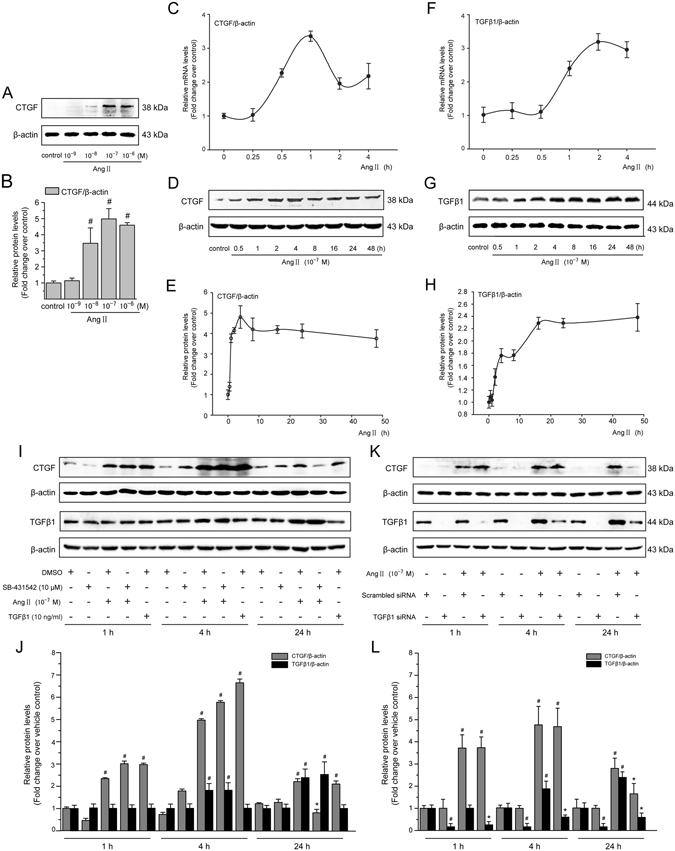Figure 1.

Ang II induces a rapid upregulation of CTGF expression independently of TGF-β in LX-2 cells. (A) Serum-starved LX-2 cells were stimulated with Ang II (10−8–10−6 M) for 4 h. Whole cell lysates were immunoblotted with CTGF antibody and a representative immunoblot band of CTGF from 3 independent experiments is shown. β-Actin was used as an internal control for equal protein loading. (B) Results of total CTGF expression were obtained from densitometric analysis and expressed as ratio CTGF/β-actin, as n-fold increase over that in unstimulated control cells. (C,F) Serum-starved LX-2 cells were exposed to Ang II (10−7 M) for 0, 0.25, 0.5, 1, 2 and 4 h. The mRNA expression of the TGF-β1 and CTGF gene was measured by the qRT-PCR method as described in the Materials and Methods section. (D,G) Serum-starved LX-2 cells were exposed to Ang II (10−7 M) for 0, 0.5, 1, 2, 4, 8, 16, 24 and 48 h. Whole cell lysates were prepared and immunoblotted with anti-CTGF or anti-TGF-β1 antibodies, respectively. Anti-β-actin antibody was used to demonstrate equal protein loading. Similar results were observed in 3 independent experiments, and representative immunoblot bands of CTGF and TGF-β1 are shown. (E,H) Quantitative determination of CTGF and TGF-β1 protein levels at various time points as indicated, which were converted to arbitrary densitometric units, normalized by the value of β-actin and finally expressed as n-fold change over that of unstimulated control cells (defined as 1.0). (I,J) TGF-β signaling was blocked by pretreatment for 1 h with SB-431542 (a TGF-β receptor kinase inhibitor; 10−5 M), (K,L) or by transfection with TGF-β1 siRNA, before incubation with or without Ang II (10−7 M) for 1, 4 and 24 h. The CTGF and TGF-β1 protein levels were analyzed by Western blotting. As a positive control of CTGF production, TGF-β1 (10 ng/mL) was used. Data are presented as mean ± SD of 3 independent experiments. # P < 0.05 versus unstimulated, or vehicle- or scrambled siRNA-treated control cells; * P < 0.05 versus Ang II- or scrambled siRNA + Ang II-treated cells.
